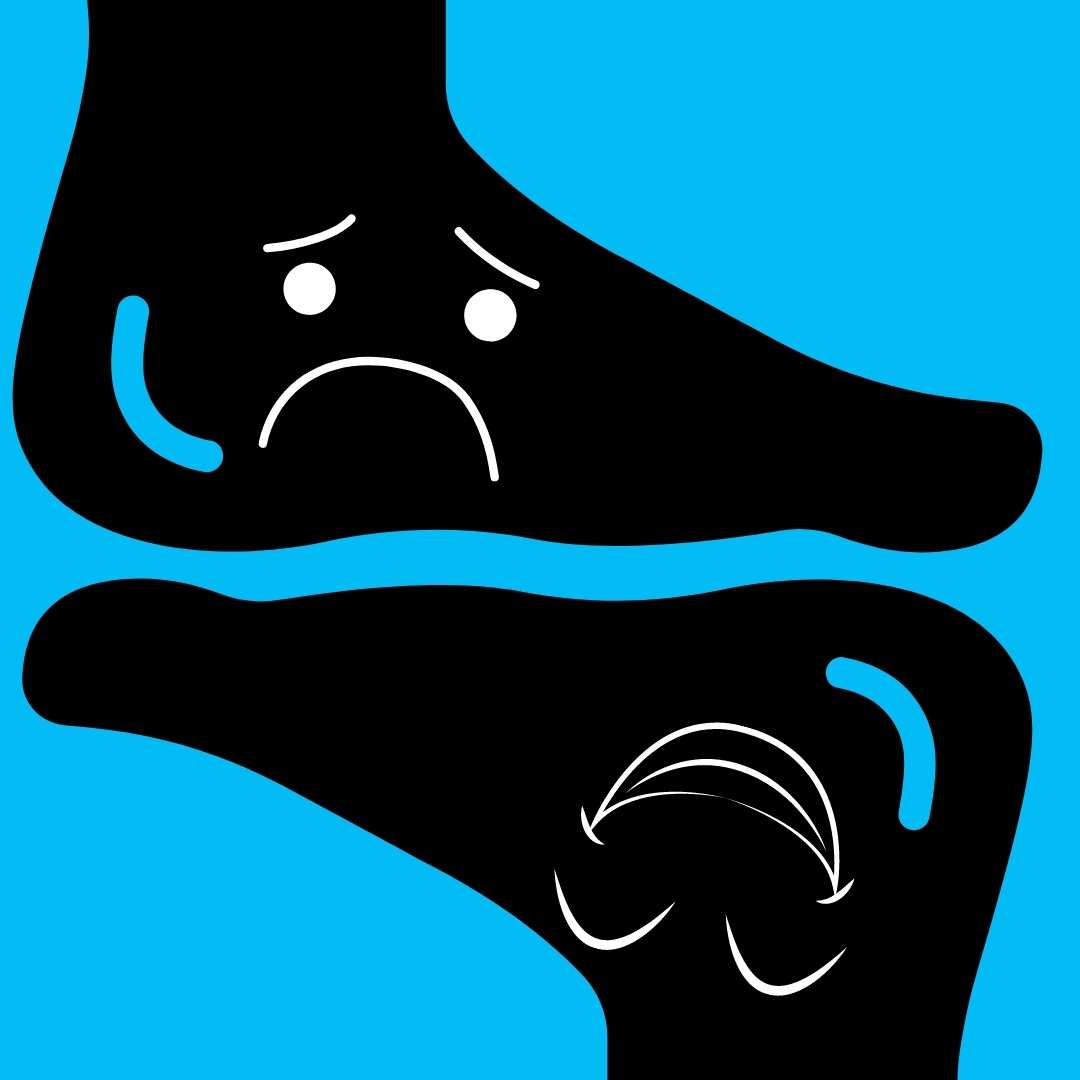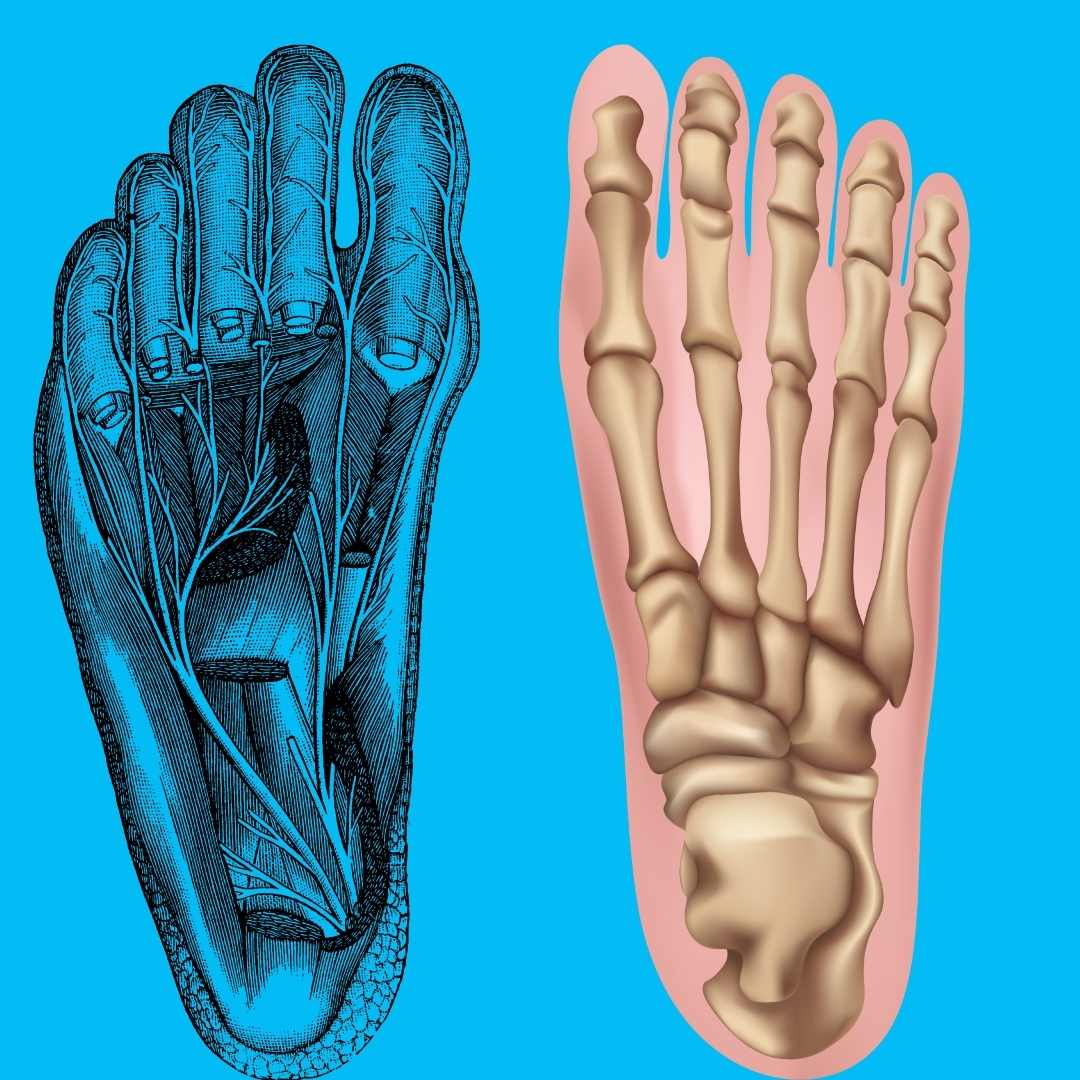Is Plantar Fasciitis an Epidemic? Why it doesn’t need to be.

Loads of people suffer from plantar fasciitis. As with many typical physical issues that crop up in a modern human, it doesn’t get the title until it is ‘this bad’. In my perspective, a person with stiff feet and poor toe control is probably having pretty much the same problem as a person with debilitating plantar fasciitis. They are likely making the same mistakes, one is further along for a variety of reason like time and lifestyle factors. Anyways, so today I want to talk to you about plantar fasciitis, and a bit about feet in general .. and obviously show you some things you can do to promote your health related to those things.
I suffered from some ‘real’ plantar fasciitis in my early 20’s after an extended period of using some hard plastic ‘athletic inserts’ in my shoes. I was also hardly aware of the word fasciitis, and never really walked barefoot or even thought about my feet very much – even when working out and things. Gosh, my knee was so valgus and my ankles were a disaster. So at the height of this issue, I was unable to lunge or bend my foot very far and it was real painful when I was barefoot. I worked my way out of it in a couple weeks as it was short lived, but from time to time I will feel the stiffness come into some part of my feet and calves. Compared to that time, my understanding of the body has evolved in pretty much every way and one thing I am passionate about, in a purely professional sense, is feet.
Most people wear very stiff shoes a lot, don’t think about their feet much, and don’t walk around barefoot often. People like this are much more likely to have plantar fasciitis, and it is a stiffening of the ‘fascia’ of the foot that then tears under a load. I believe this is ultimately caused by downregulation of the low limb and feet and a chronic lack of movement, and/or faulty posture and movement patterns improperly stressing the legs and causing some parts of the foot to exhibit symptoms from over-strain. Getting to a place like this, especially a very prominent and painful version of it takes time, and training your feet to properly support you may take a little time as well.
Symptoms of Plantar Fascitis are as follows from mild to wild in my opinion
- Limited dorsiflexion
- Limited plantar flexion
- Limited ankle mobility
- Lack of fine control of the toe and feet
- Lack of fine control of the ankle
- Often tired feet
- Feet that feel stiff at times
- Feet that can’t do certain yoga poses
- Feet that hurt at times
- Feet that burn during some activities
- Feet that sting several days a week
- Constant soreness in the feet
- Feet that hurt more when they are barefoot
- Feet that feet injured from movement
- Feet that are not okay to stand on for long
- Feet with frequent sharp pain
Stress fractures, gout, heel spurs, and sciatica will sometimes have similar symptoms.
If you have numbness, it’s probably not fasciitis (sciatica), If it’s in your heel mostly, and it’s sharp on hard surfaces(heel spur), if it’s extremely sensitive to the touch and sensations feel extreme (gout), if it’s pretty similar but there is NO stiffness, it’s more likely a stress fracture. If there is discoloration, it likely a tear of some sort.
Anyways so, now you know a bit about what does and does not characterize plantar fasciitis, let’s understand some more about the structures of the foot. There are 26 bones, 33 joints, 107 ligaments, and 19 muscles in each of your feet. Your feet has as many sensory nerve ending as your hands!! Another important part of the foot is fascia, obviously, and it’s real thick on your foot. Roughly 4 ‘layers’ on the bottom and there is an anchor point on your heel. It is speculated that the constant tension on the bottom of the foot in plantar fasciitis can lead to the growth OF heel spurs which are bony protrusion out of the heel and where that fascia anchors.
Due to the hard, tight, not foot-shaped shoes our feet are deprived of information and stimulation and their sensitivity and capability are lost as your body isn’t having a need for it. Your body is constantly digesting and creating itself, and it is doing this to your capabilities as well. Generally the more comfortable you make your feet with special implements and traditionally stylish shoes, the more down regulated and limited they will become.
Let’s zoom back into Plantar Fasciitis now – Here is what you can do to treat/prevent PF and promote foot health.
- Wiggle your toes
- Walk barefoot
- Roll your feet on frozen water bottles
- Stand against a wall for 2 minutes
- Roll your feet on tennis balls, lacrosse balls when sitting or standing
- Wind your feet and ankles
- Stretch and release your calves
- Use a slant board
- Expose your feet to different textures, temperatures, materials etc. to upregulate your sensory system
- Transition to shoes with wide toe boxes and flat soles to empower your feet to grow to support you
Manage your posture in general to help your body spread out your impacts and stress properly so you don’t overtultize a smaller number of muscles/tendons in your low limb.
I think that getting over Plantar Fasciitis is just one in a longer journey to having super strong and capable feet. I was very dysfunctional growing up, and it took me a long while to understand my own body and really work on what matters. One of the most rewarding aspects has been taking my visibly incapable feet and ankles and helping them become strong and awesome. I can do more than every, and I have a shoe brand I love that I am an affiliate with. It is Xero shoes, and you can get some at this link! I decided to switch to only xero shoes in 2015, and now I have way too many, and incredible feet – as long as I continue to take care of them and roll them out a few times a month.
You can see some other articles that touch the topics listed here at:


